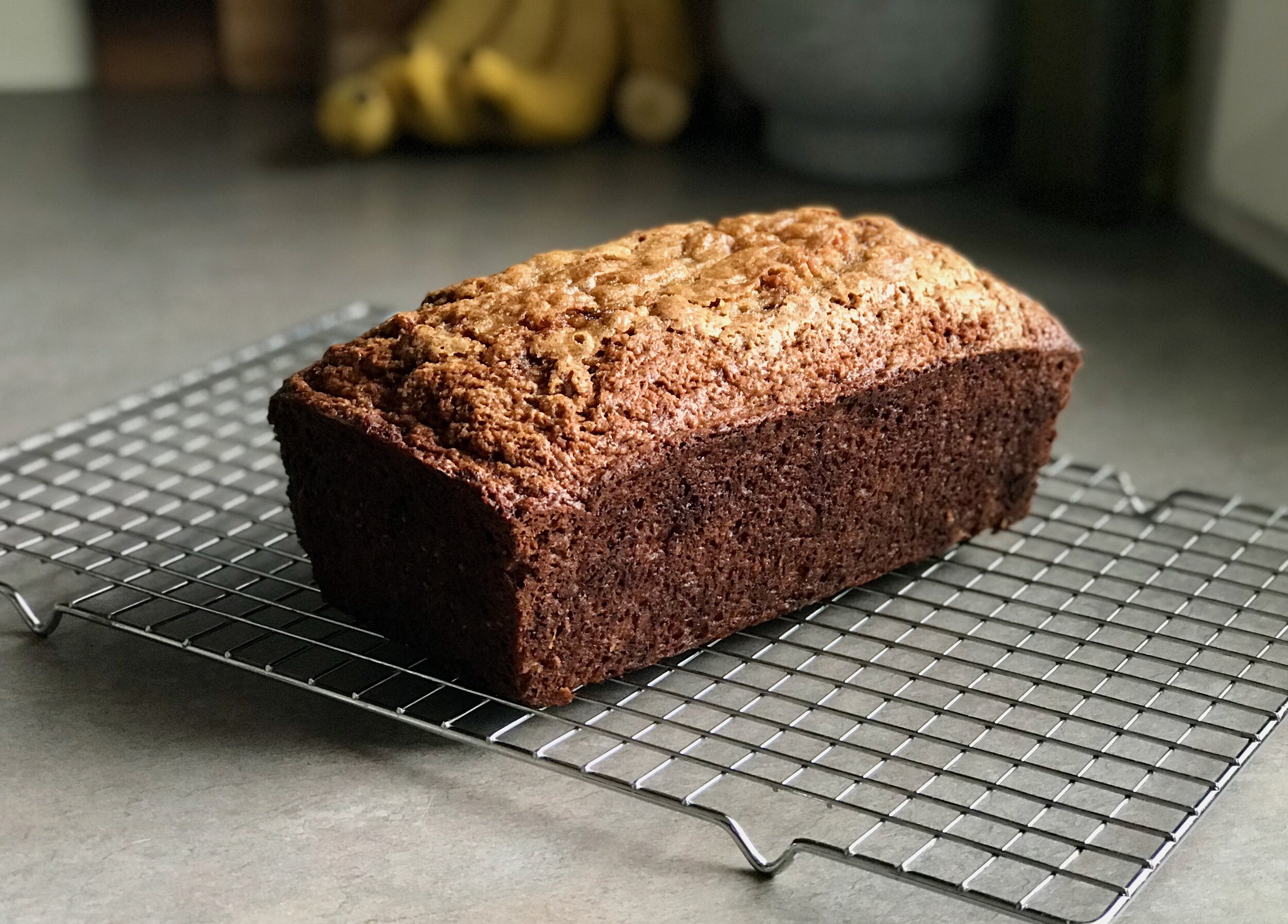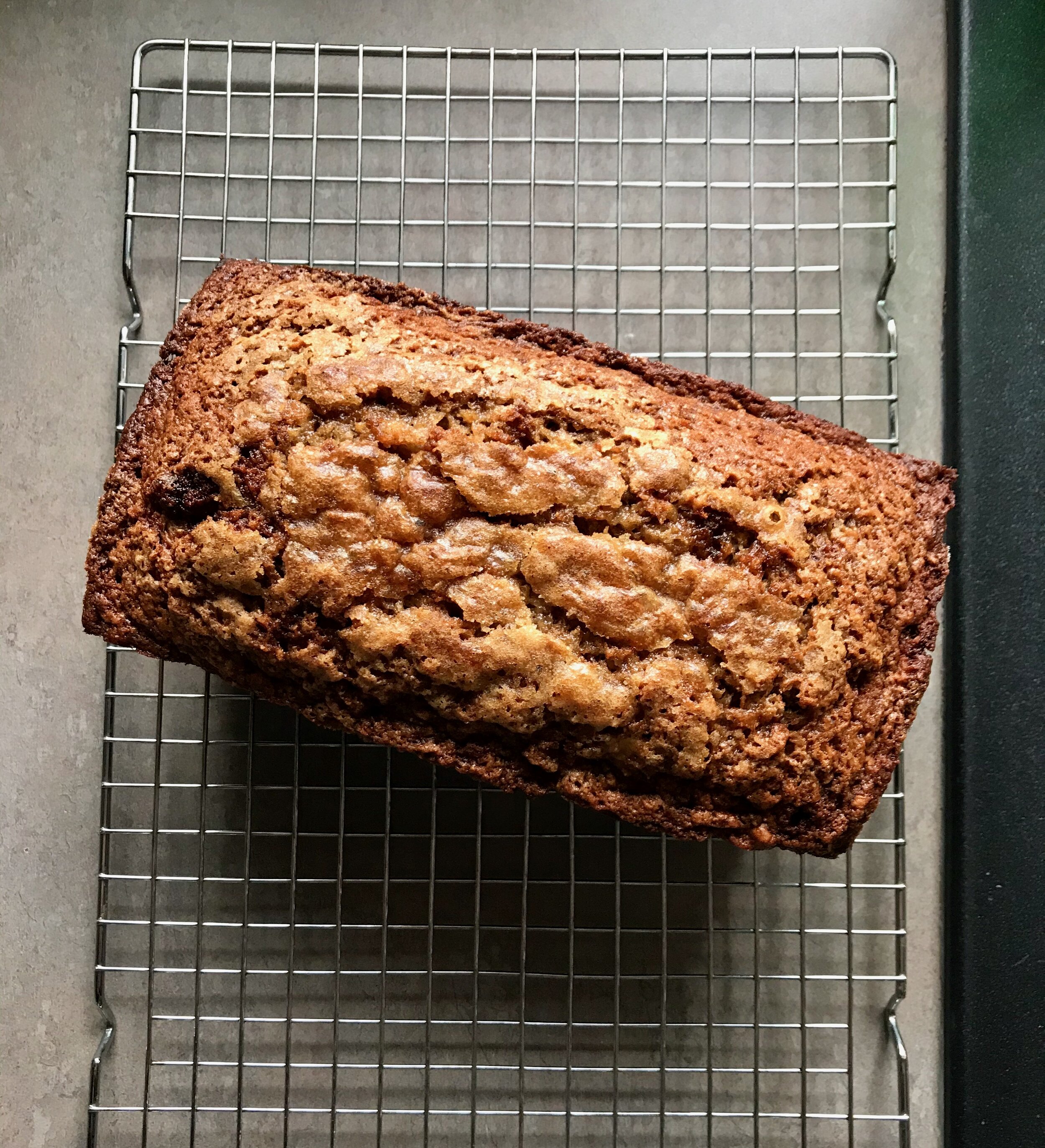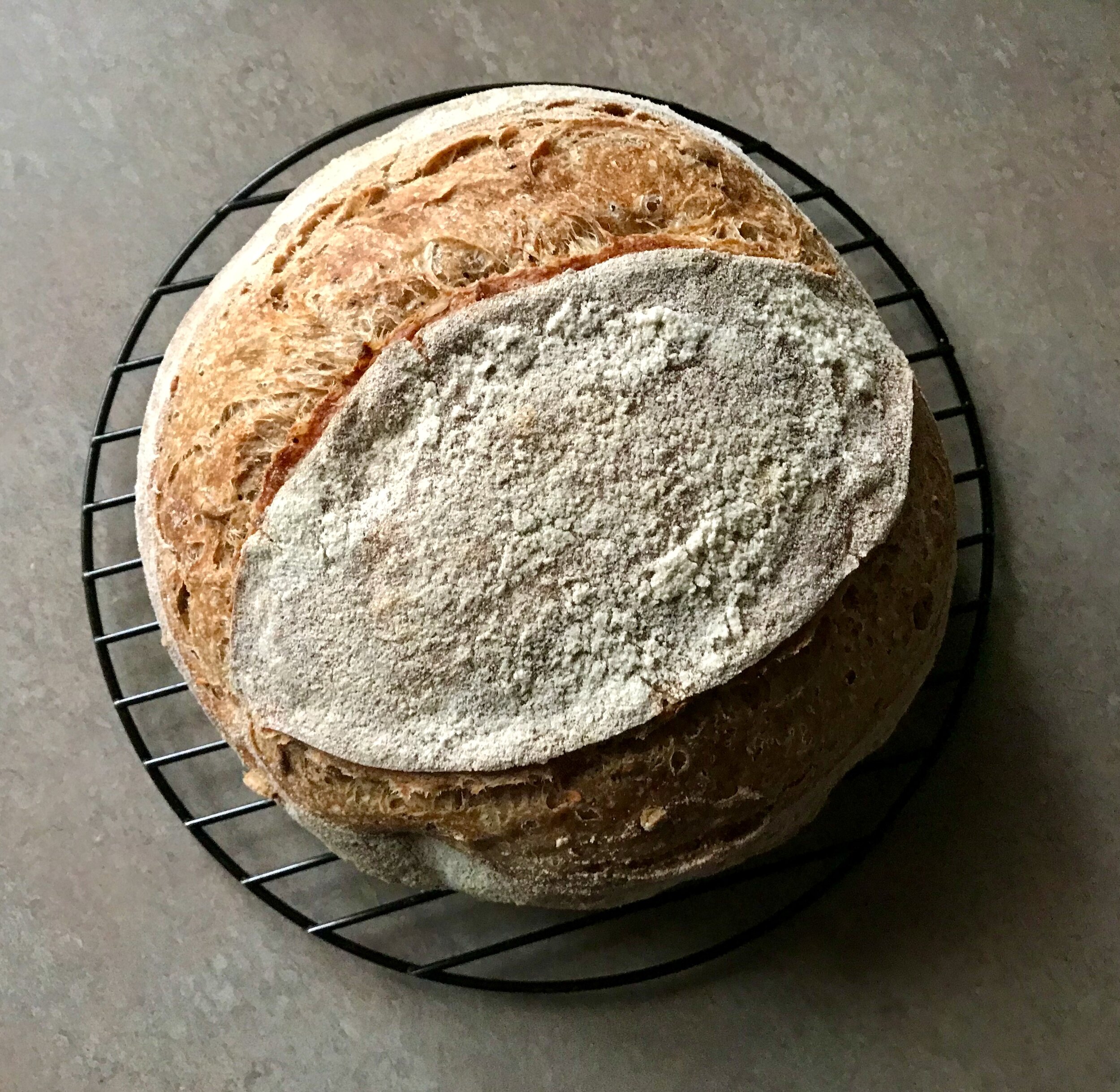Sourdough Banana Bread
Last week I made my last baked good in my old kitchen. The day I was baking it was the first day of demo for my kitchen reno! That’s right, Lara and I are renovating our kitchen/dining room! We started thinking about this in June of last year. It was something we thought about doing “someday”, but then in June we decided to just go for it. Not sure exactly why the light switch flipped, but definitely think COVID had a lot to do with it, being stuck at home all the time. It also helped so much that the federal government changed the interest rate on all federal student loans to 0%. Yes, 0%. No interest has been collecting on my loans for months and months now. That has been so nice to see.
Anyway, I knew I had only a few days left in my kitchen so I did some baking and cooking. I had quite a bit of leftover sourdough starter in the fridge that I wanted to use up. I wanted a recipe that used a lot of it, but wasn’t difficult or didn’t take too long.
I wasn’t really even searching for a recipe that morning, but this sourdough banana bread recipe just popped up on my Instagram feed. I knew it was meant to be. I was able to get it whipped together and baked before the demolition crew showed up. Used up almost all of my leftover starter which was great.
It smelled amazing, as banana bread does, while baking. I heard the demo crew immediately comment that it smelled really good! Later in the day as they were heading out, the final loaf was still sitting on the counter and they commented again, “it’s the banana bread!”. :) When I cut it later that night I just had to set aside a few pieces for the guys the next day. I heard later that they really appreciated it!
Other than having the sourdough starter, this was a pretty basic banana bread. It was quick and easy to put together and it baked up beautifully. The baking time was actually pretty accurate, it rose well, and developed a lovely rounded and crackly crust. I am a big fan. It also taste delicious. I would probably up the cinnamon and other spices next time just because I like more of them in my banana bread, as written the spices are quite subtle.
A few specifics on what I did; I used 1/2 cup (100 grams) brown sugar instead of 2/3 cup as stated in the recipe. Since there is also 1/4 cup honey I thought this would be fine, and it was. I didn’t notice any missing sugar/sweetness. I also added a few additional spices, just a pinch of allspice and cloves. But as stated above I would probably add more spices next time, if nothing else I would increase the cinnamon. I used about 3 + 1/3 medium/average sized bananas to get to 397 grams required in the recipe. I also added a little whole wheat flour, using a little under a cup of home ground white winter wheat that I ground before the kitchen was gone and am storing in the freezer. I also added in walnuts, about half of what the recipe recommends, I threw in about 45-50 grams. It was a nice addition. I could definitely add more next time.
All in all this one is a keeper. I will be using this to use up sourdough starter in the future I have no doubt!
Sourdough Banana Bread
From King Arthur Baking Company
Ingredients
8 tablespoons (113g) unsalted butter, at cool room temperature
2/3 cup (142g) brown sugar, packed
1 teaspoon vanilla extract
1 teaspoon cinnamon
1/4 teaspoon nutmeg
1 teaspoon baking soda
1 teaspoon baking powder
1 teaspoon salt
1 3/4 cups (397g) mashed ripe banana (from about 1 3/4 pounds unpeeled bananas) - I was too lazy to actually mash up the bananas, so I just chopped them up and through them in in chunks. They never really smoothed out in the batter, they stayed chunky, but once it was baked up it didn’t seem to matter. No chunks or weird spots in the final bread - Yay for lazy success!
1/4 cup (85g) honey
2 large eggs
1/2 cup (113g) sourdough starter, unfed/discard
2 cups (240g) Unbleached All-Purpose Flour - I used some whole wheat, a little under a cup
3/4 cup (85g) chopped nuts, optional
Directions
Preheat the oven to 325°F. Lightly grease a 9" x 5" loaf pan, set aside.
In a large bowl, combine the butter, sugar, vanilla, cinnamon, nutmeg, baking soda, baking powder, and salt, beating until smooth. Add the mashed bananas, honey, eggs, and sourdough starter, again beating until smooth. Add the flour then the nuts, stirring just until smooth.
Transfer the batter to the prepared loaf pan, smoothing the top. Let it rest at room temperature for 10 minutes.
Bake the bread for 45 minutes, then gently lay a piece of aluminum foil across the top to prevent over-browning.
Bake for an additional 20-25 minutes. Remove the bread from the oven; a long toothpick or thin paring knife inserted into the center should come out clean, with a few wet crumbs clinging to it.
Allow the bread to cool for 10 minutes in the pan. Remove it from the pan and cool completely on a rack.




































